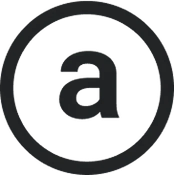Navigating the crypto universe often feels like traversing two vastly different worlds: one focused on seamless cross-chain liquidity and the other on eternal data permanence. Thorchain and Arweave exemplify these distinct paradigms, each revolutionizing their respective domains with innovative architectures and unique value propositions. While Thorchain facilitates decentralized asset swaps across multiple blockchains without wrapped tokens, Arweave offers a groundbreaking approach to immutable, lifelong data storage. Understanding their core technologies, use cases, and strategic differences provides valuable insights for investors and developers seeking tailored blockchain solutions.
Short on time? Jump to Thorchain vs Arweave Comparison
Understanding Thorchain and Arweave ?
Thorchain is a Layer-1 blockchain built on the Cosmos SDK, designed to enable decentralized cross-chain swaps without relying on wrapped assets. Its architecture employs the Tendermint consensus engine, ensuring security through node bonding and threshold signature schemes that require a two-thirds majority for fund movements. Thorchain's primary focus is providing liquidity across various blockchains via continuous liquidity pools, which are paired with its native token, RUNE. This setup allows users to swap assets directly and efficiently, promoting interoperability in the DeFi space. The network also features products like yield-generating synthetic assets and overcollateralized loans, expanding its ecosystem beyond simple swaps.
Arweave, on the other hand, is a decentralized storage network aiming to preserve data permanently through its innovative proof-of-access consensus mechanism. By leveraging a sustainable endowment model, Arweave ensures that data remains accessible forever after a one-time payment, making it ideal for immutable web applications and archival storage. Its architecture involves miners replicating and storing data over time, incentivized by the AR token. The platform’s unique 'permaweb' enables developers to deploy permanent web pages and applications, ensuring content durability and resistance to censorship. As data sovereignty becomes increasingly critical, Arweave's approach offers a resilient solution for long-term data preservation.
Both networks are pioneering in their fields—Thorchain in cross-chain liquidity and Arweave in permanent data storage—yet their foundational technologies and targeted use cases diverge significantly. Thorchain’s emphasis on interoperability and DeFi product expansion contrasts with Arweave’s focus on data permanence and censorship resistance. These differences highlight how blockchain innovation can cater to diverse needs, from financial transactions to digital archiving, shaping the future landscape of decentralized technologies.
In this comparison, we will explore the technical architectures, economic models, key features, and ideal user bases for Thorchain and Arweave. By dissecting their core components and recent developments, including Thorchain’s V3 upgrade and Arweave’s adoption trajectory, readers will gain a comprehensive understanding of each network's strengths and limitations, enabling informed decisions whether for investment, development, or strategic integration.
Key Differences Between Thorchain and Arweave
Core Functionality
- Thorchain: Thorchain functions as a decentralized liquidity protocol that enables seamless asset swaps across multiple blockchains without the need for wrapped tokens. Its infrastructure supports cross-chain trading, liquidity pools, and DeFi products like synthetic assets and loans, making it a vital component for DeFi interoperability.
- Arweave: Arweave serves as a permanent decentralized storage network that guarantees data persists forever through its proof-of-access consensus mechanism. It is optimized for immutable web content, digital archives, and applications requiring lifelong data availability without ongoing storage fees.
Consensus Mechanism
- Thorchain: Thorchain utilizes Tendermint BFT consensus, which provides fast finality and security through validator nodes staking RUNE. The recent upgrade to Cosmos SDK v0.50 and CometBFT enhances scalability, security, and interoperability with other Cosmos-based chains.
- Arweave: Arweave employs a proof-of-access (PoA) consensus, where miners prove they have access to previously stored data, ensuring ongoing replication and storage over time. This mechanism sustains the network’s data permanence and incentivizes miners with AR tokens.
Economic Model
- Thorchain: Thorchain's economic model revolves around RUNE token bonding, liquidity provision fees, and a recent token burn mechanism introduced in V3 to create scarcity. The network incentivizes liquidity providers and node operators through fees and yield products.
- Arweave: Arweave’s model is based on a one-time, upfront storage fee funded by an endowment that guarantees data permanence. The AR token incentivizes miners to maintain data storage, with the network designed for long-term sustainability through a perpetual endowment.
Use Cases
- Thorchain: Thorchain is primarily used for cross-chain asset swaps, DeFi liquidity provision, synthetic assets, and lending products. Its focus is on creating an interconnected liquidity ecosystem across various blockchains.
- Arweave: Arweave’s use cases include permanent web applications, digital archives, censorship-resistant content, and decentralized data storage solutions. Its 'permaweb' enables immutable websites and content that are accessible indefinitely.
Development & Upgrades
- Thorchain: Thorchain’s recent V3 upgrade has introduced a token burn mechanism, enhanced security through upgraded consensus protocols, and added a developer-friendly App Layer supporting dApps like order books and NFTs. These improvements bolster scalability and functionality.
- Arweave: Arweave continues to develop its protocol to improve data throughput, incentivization, and integration capabilities, with a focus on expanding its ecosystem of permanent applications and enhancing storage efficiency.
Thorchain vs Arweave Comparison
| Feature | ✅ Thorchain | ✅ Arweave |
|---|---|---|
| Primary Function | Decentralized cross-chain swaps and DeFi liquidity | Permanent, immutable data storage |
| Consensus Mechanism | Tendermint BFT with Cosmos SDK | Proof-of-Access (PoA) |
| Economic Model | RUNE token bonding, burns, and yield products | One-time storage fee, endowment-based sustainability |
| Main Use Cases | Cross-chain asset trading, synthetic assets, DeFi products | Decentralized web apps, archival storage, censorship resistance |
| Recent Upgrades | V3 upgrade with token burn, App Layer, interoperability | Protocol optimizations, ecosystem expansion |
| Target Audience | DeFi builders, liquidity providers, traders | Developers needing permanent data storage, archivists |
Ideal For
Choose Thorchain: DeFi users and developers aiming for seamless cross-chain liquidity and advanced financial products.
Choose Arweave: Content creators, archivists, and developers seeking immutable, lifelong data storage solutions.
Conclusion: Thorchain vs Arweave
Thorchain and Arweave exemplify the diversity of blockchain innovation, each tackling fundamental challenges—interoperability and data permanence—through specialized architectures. Thorchain’s robust cross-chain liquidity network leverages Cosmos SDK upgrades and incentive mechanisms to facilitate seamless asset swaps, positioning itself as a cornerstone of DeFi interoperability. Conversely, Arweave’s revolutionary approach to permanent storage harnesses proof-of-access and endowment models to preserve digital history, making it indispensable for censorship-resistant web applications and archives.
Choosing between these platforms depends heavily on the specific needs of users and developers. Those involved in decentralized finance will benefit from Thorchain’s liquidity pools and advanced interoperability features, especially as its ecosystem continues to evolve with upgrades like V3. Meanwhile, entities prioritizing long-term data integrity and censorship resistance should consider Arweave for its immutable, perpetual storage capabilities. Both networks exemplify how blockchain can transcend traditional boundaries, shaping a future where interoperability and data sovereignty coexist seamlessly.






